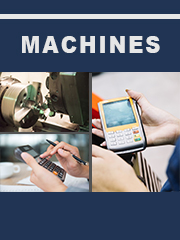TOP CATEGORY: Chemicals & Materials | Life Sciences | Banking & Finance | ICT Media

Download Report PDF Instantly
Report overview
The global Automated Aquaculture Feeding Systems market was valued at US$ 2062.7 million in 2023 and is projected to reach US$ 3891.8 million by 2030, at a CAGR of 9.4% during the forecast period.
The USA market for Global Automated Aquaculture Feeding Systems market is estimated to increase from USD million in 2023 to reach USD million by 2030, at a CAGR during the forecast period of 2023 through 2030.
The China market for Global Automated Aquaculture Feeding Systems market is estimated to increase from USD million in 2023 to reach USD million by 2030, at a CAGR during the forecast period of 2023 through 2030.
The Europe market for Global Automated Aquaculture Feeding Systems market is estimated to increase from USD million in 2023 to reach USD million by 2030, at a CAGR during the forecast period of 2023 through 2030.
This research report provides a comprehensive analysis of the Automated Aquaculture Feeding Systems market, focusing on the current trends, market dynamics, and future prospects. The report explores the global Automated Aquaculture Feeding Systems market, including major regions such as North America, Europe, Asia-Pacific, and emerging markets. It also examines key factors driving the growth of Automated Aquaculture Feeding Systems, challenges faced by the industry, and potential opportunities for market players.
The global Automated Aquaculture Feeding Systems market has witnessed rapid growth in recent years, driven by increasing environmental concerns, government incentives, and advancements in technology. The Automated Aquaculture Feeding Systems market presents opportunities for various stakeholders, including Fish, Shrimp. Collaboration between the private sector and governments can accelerate the development of supportive policies, research and development efforts, and investment in Automated Aquaculture Feeding Systems market. Additionally, the growing consumer demand present avenues for market expansion.
According to data from the Food and Agriculture Organization of the United Nations (FAO), the global aquatic product farming volume has shown an increasing trend from 1959 to 2021. According to preliminary statistics, the global aquatic product farming volume in 2021 was about 128 million tons. The State of World Fisheries and Aquaculture 2022 shows that total global aquaculture initial sales in 2020 was approximately US$265 billion, with farm sales estimated to total US$281.5 billion. Of the total aquaculture production, 87.5 million tons were produced of aquatic animals, mainly for human consumption; 35.1 million tons of algae, including food and non-food uses; 700 tons of shellfish and decorative pearls. Asian countries account for 70% of the global aquatic animal production in fisheries and aquaculture, followed by the Americas, Europe, Africa and Oceania.
Key Features:
The research report on the Automated Aquaculture Feeding Systems market includes several key features to provide comprehensive insights and facilitate decision-making for stakeholders.
Executive Summary: The report provides overview of the key findings, market trends, and major insights of the Automated Aquaculture Feeding Systems market.
Market Overview: The report provides a comprehensive overview of the Automated Aquaculture Feeding Systems market, including its definition, historical development, and current market size. It covers market segmentation by Type (e.g., Gas, Diesel), region, and application, highlighting the key drivers, challenges, and opportunities within each segment.
Market Dynamics: The report analyses the market dynamics driving the growth and development of the Automated Aquaculture Feeding Systems market. The report includes an assessment of government policies and regulations, technological advancements, consumer trends and preferences, infrastructure development, and industry collaborations. This analysis helps stakeholders understand the factors influencing the Automated Aquaculture Feeding Systems market's trajectory.
Competitive Landscape: The report provides an in-depth analysis of the competitive landscape within the Automated Aquaculture Feeding Systems market. It includes profiles of major market players, their market share, strategies, product portfolios, and recent developments.
Market Segmentation and Forecast: The report segment the Automated Aquaculture Feeding Systems market based on various parameters, such as by Type, region, and by Application. It provides market size and growth forecasts for each segment, supported by quantitative data and analysis. This helps stakeholders identify growth opportunities and make informed investment decisions.
Technological Trends: The report should highlight the key technological trends shaping the Automated Aquaculture Feeding Systems market, such as advancements in Type One technology and emerging substitutes. It analyses the impact of these trends on market growth, adoption rates, and consumer preferences.
Market Challenges and Opportunities: The report identify and analyses the major challenges faced by the Automated Aquaculture Feeding Systems market, such as technical bottleneck, cost limitations, and high entry barrier. It also highlights the opportunities for market growth, such as government incentives, emerging markets, and collaborations between stakeholders.
Regulatory and Policy Analysis: The report should assess the regulatory and policy landscape for Automated Aquaculture Feeding Systems, including government incentives, emission standards, and infrastructure development plans. It should analyse the impact of these policies on market growth and provide insights into future regulatory developments.
Recommendations and Conclusion: The report conclude with actionable recommendations for stakeholders, such as Application One Consumer, policymakers, investors, and infrastructure providers. These recommendations should be based on the research findings and address key challenges and opportunities within the Automated Aquaculture Feeding Systems market.
Supporting Data and Appendices: The report include supporting data, charts, and graphs to substantiate the analysis and findings. It also includes appendices with additional detailed information, such as data sources, survey questionnaires, and detailed market forecasts.
Market Segmentation
Automated Aquaculture Feeding Systems market is split by Type and by Application. For the period 2019-2030, the growth among segments provides accurate calculations and forecasts for consumption value by Type, and by Application in terms of volume and value.
Market segment by Type
Market segment by Application
Global Automated Aquaculture Feeding Systems Market Segment Percentages, By Region and Country, 2023 (%)
Major players covered
Outline of Major Chapters: